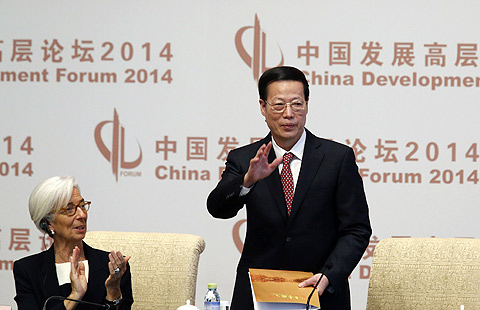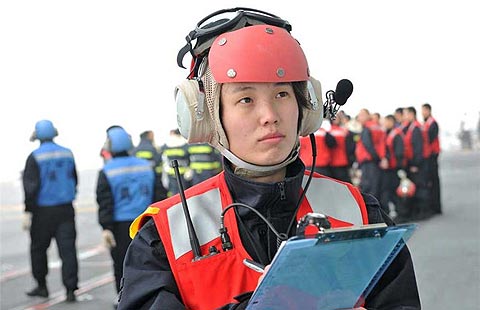Protectionism panned for Brazil: panel
Updated: 2014-03-24 05:58
By CHEN WEIHUA in Washington (China Daily Latin America)
|
||||||||
Protectionism is not the way for Brazil to increase the competitiveness of its manufacturing sector against competitors such as China, according to economists at a panel discussion in Washington DC on March 20.
Mauricio Moreira, principal economist of the trade and integration sector of the Inter-American Development Bank, believes many of the Brazilian policy measures in the last few years are totally counterproductive. "To raise protection is not the answer," he told a panel discussion on China-Brazil economic and political relations at the Council of the Americas.
Moreira said those policies would end up not allowing Brazilian industry to adjust to reality.
Brazil's massive tariff and non-tariff barriers erected in the last few years have triggered widespread concern among its major trading partners. The European Union, for example, launched a case last December at the World Trade Organization over Brazil's taxes on imports from cars to computers.
According to a WTO report a month ago, Brazil was the country that had adopted the most trade protectionist measures in 2013, with a total of 39 new anti-dumping measures. Some of the measures that were meant to be temporary at the time of enactment later became Brazil's long-term policy.
Many of the protectionist measures — such as on the auto sector and foreigners' purchase of Brazilian land — did not name China specifically, but clearly had Chinese investment in those sectors in mind.
Brazil has also been adopting increasing anti-dumping duties on Chinese exports in past years. As recently as March 17, Brazil's Foreign Trade Association (AEB) decided to impose a six-month anti-dumping duty on sodium acid pyrophosphate, an inorganic chemical compound used in food processing.
Anti-dumping duties were also imposed frequently in the past two months on Chinese-made goods such as bicycle tires, pencils and nylon string.
Moreira believes it's not fair for some to blame China for Brazil's major problems. He said that even without the government support that a lot of Chinese companies have, the Chinese are much more competitive than Brazilians.
In Moreira's view, Brazil has become too obsessed with the East Asia model of export-led growth in developing its manufacturing, which requires a huge workforce and low wages.
The economist believes Brazil should tap into its huge advantage of natural resources by adding value, rather than compete in industries where it stands no chance of winning, such as shoes.
"It doesn't mean manufacturing has to disappear. But manufacturing can develop around resources," he said.
Claudia Trevisan, Washington correspondent for the newspaper O Estado de S. Paulo who had previously been stationed in Beijing for years, said Chinese companies are also learning how to operate in the Brazilian environment, which is very different from China.
But she said Brazil needs to make some changes in order to become more competitive.
She believes the enormous size of the Brazilian market will continue to draw investors, including from China.
She noted the Chinese investors have already shifted to consumer goods, citing Huawei, China's largest telecom equipment manufacturer, which has invested heavily in Brazil, as a good example.
Early last month, a group led by State Grid Corp of China won bidding for the rights to build power lines to the Belo Monte Amazon dam, which is likely to become the world's third-largest hydropower plant.
China is now Brazil's largest trade partner, with two-way trade reaching $90.3 billion in 2013, up 5.3 percent over the previous year, according to Chinese Customs reports.
Of this, China's exports accounted for $36.2 billion, up 8.3 percent, while Brazil's exports to China hit $54.1 billion, an increase of 3.4 percent. Brazil has overtaken Russia to become China's ninth largest trading partner.
China's trade with Brazil has also diversified to include a wide range of areas, such as agriculture, livestock husbandry, aerospace technology, infrastructure, telecommunication and new energy.

 Obamas climb Great Wall after lunch of trout
Obamas climb Great Wall after lunch of trout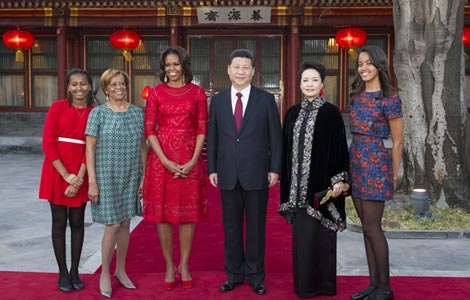
 US first lady shows character during maiden visit to China
US first lady shows character during maiden visit to China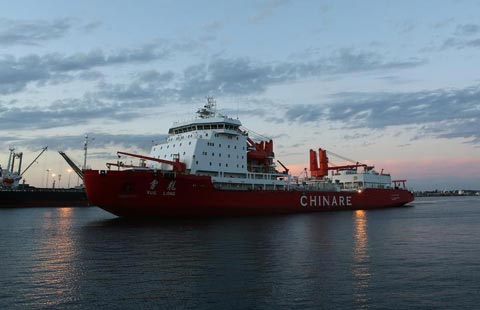
 Icebreaker heads for southern Indian Ocean for missing jet
Icebreaker heads for southern Indian Ocean for missing jet
 A long musical journey to Carnegie Hall
A long musical journey to Carnegie Hall
 Balancing an egg on end during vernal equinox
Balancing an egg on end during vernal equinox
 Los Angeles County Air Show
Los Angeles County Air Show
 Don't need a bed to sleep tight
Don't need a bed to sleep tight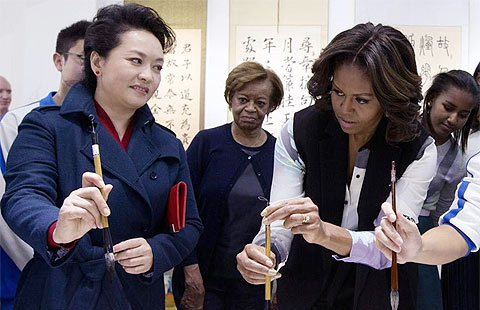
 Peng Liyuan meets with Michelle Obama
Peng Liyuan meets with Michelle Obama
Most Viewed
Editor's Picks

|

|

|

|

|

|
Today's Top News
Studying abroad remains vital ingredient of US foreign policy
Obamas climb Great Wall
First lady takes in some Peking Opera
Xi begins key Europe visit
US first lady shows character during visit
Xi sets off on first European tour
Beijing beefs up hunt for missing jet
China Southern announces Guangzhou-NY flight
US Weekly

|

|


